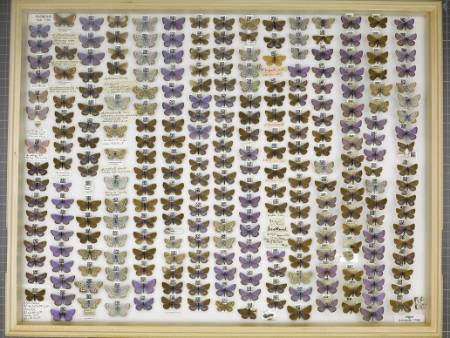One of the most prestigious international gatherings of scientists, policy specialists, journalists, science communications professionals and the US public is the annual meeting of the American Association for the Advancement of Science. It attracts several thousand participants every year: in 2015 it is in San Jose, California from 12-16 February.
The NHM is represented this year by Professor Ian Owens, Director of Science, who is co-organiser and speaker at a session Unlocking Natural History Collections to Model the Biosphere in collaboration with NHM's sister institution the Smithsonian National Museum of Natural History (NMNH) from Washington D.C.
Session information
Unlocking the Vault: Digitizing Collections To Understand Global Biodiversity
Saturday, 14 February 2015: 3:00 PM-4:30 PM, Room LL21C (San Jose Convention Center)
https://aaas.confex.com/aaas/2015/webprogram/Session9604.html
Ian and Jonathan Coddington (from the NMNH) will be speaking on the potential of collections data in addressing global environmental challenges. 4.5 billion specimens in natural history collections are a key resource for science supporting our future on Earth. Unlocking this valuable data source through digitisation will support sustainable use of biodiversity, better understanding of parasite threats to human health, and essential insights for the development of new crops to feed a growing population.
Both NHM and NMNH have ambitious programmes of digitising collections - creating images, data and DNA evidence - to enable much wider scientific use by researchers around the world. The future of this bold enterprise will be mapped out in the session on at AAAS on Saturday 14 February, showing how major institutions are creating genomic collections and digitizing biological data to make it openly available, often with the help of thousands of online citizen scientists. Researchers are harnessing the potential of collections as an immense dataset on the planet’s past and present, used for modelling the future for better-informed policy.
Digitization, genomics and citizen science are enabling scientists to work across multiple collections and millions of specimens. The collections highlight geographic, temporal, morphological, and genomic patterns of diversity across a vast range of species. By combining collections data with new modeling and data visualization tools, analyses of biodiversity are possible on a scale never before seen.
Society needs systems that deliver the best possible estimate of the abundance, distribution and functional role of all species, from the recent past to projecting into the future. Delivering this requires an unprecedented level of cooperation by natural history organizations and the wider community.
https://aaas.confex.com/aaas/2015/webprogram/Session9604.html






